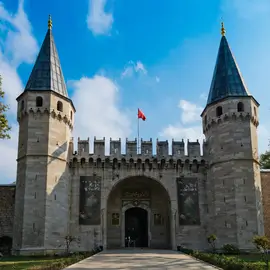When you walk through the gates of Topkapi Palace, you’re not just entering a building — you’re stepping into the heart of the Ottoman Empire. Perched on a hill overlooking the Bosphorus, this sprawling palace complex was once the residence of sultans, the seat of imperial power, and a treasury of some of the world’s most important relics.
Whether you’re a history buff, a lover of art and architecture, or simply exploring Istanbul’s rich cultural heritage, Topkapi Palace offers a window into a world of luxury, politics, and intrigue that shaped centuries of history.
A Palace Steeped in Power
Built in 1478 by Sultan Mehmed II, shortly after his conquest of Constantinople, Topkapi Palace was the administrative center of the Ottoman Empire for nearly 400 years. Over time, it evolved from a fortress-like structure into a labyrinth of pavilions, courtyards, mosques, kitchens, and gardens.
At its peak, it housed over 4,000 people, including sultans, concubines, eunuchs, courtiers, and officials. Unlike the royal palaces of Europe, which were often designed for show, Topkapi was a functional, working palace. Every area served a purpose — and many secrets unfolded behind its high walls.
What to See Inside the Palace
1. The Imperial Gate & First Courtyard
Your journey begins at the Bab-ı Hümayun (Imperial Gate), which opens into the First Courtyard. This vast garden space was once accessible to the public and is home to the Hagia Irene Church, the oldest church in Istanbul still standing in its original form.
2. Second Courtyard & The Palace Kitchens
Passing through the Gate of Salutation, you’ll enter the Second Courtyard. Here, you’ll find the Imperial Council Hall, where ministers met to discuss state affairs, and the impressive palace kitchens, which served thousands of meals daily. Don’t miss the display of Chinese and Japanese porcelain — one of the finest collections in the world.
3. The Harem
Perhaps the most intriguing part of the palace is the Harem — the private quarters of the sultan and his family. Contrary to popular myth, the Harem was not merely a place of indulgence but a carefully structured hierarchy of wives, concubines, eunuchs, and servants. It’s a maze of over 400 rooms, filled with Iznik tiles, golden doors, private baths, and whispering echoes of power and manipulation.
Note: Entry to the Harem requires a separate ticket — but it’s worth it.
4. Third Courtyard & The Sultan’s Chambers
The Third Courtyard, accessible only to the inner circle of the court, houses the Audience Chamber, Library of Ahmed III, and the Privy Chambers. These were the sultan’s most private rooms. The level of artistry here is stunning — from ornate calligraphy to intricate tilework and inlaid wood ceilings.
5. The Sacred Relics
One of the most spiritually significant areas of the palace is the Chamber of the Sacred Relics, which contains items believed to belong to the Prophet Muhammad, such as his cloak, sword, and beard hairs. These relics are deeply revered and presented with solemn respect, accompanied by continuous readings from the Qur’an.
6. The Treasury
The Imperial Treasury showcases the wealth of the empire. Highlights include the Topkapi Dagger — famous for its enormous emeralds — and the Spoonmaker’s Diamond, an 86-carat gem surrounded by a mystery-filled legend. It’s truly a display of opulence that reflects the empire’s golden age.
Gardens, Views, and Peace
Beyond the architectural marvels and historical artifacts, Topkapi Palace offers some of the best views of Istanbul. The terraced gardens overlooking the Bosphorus are a perfect place to take a break and absorb the atmosphere. Imagine sultans standing where you are, gazing out over the same waters centuries ago.
Tips for Visiting Topkapi Palace
- Go early: It gets crowded, especially during tourist season.
- Allow at least 2–3 hours: There’s a lot to explore, especially if you visit the Harem.
- Get a Museum Pass: It can save time and money if you’re planning to visit multiple sites in Istanbul.
- Hire a guide or audio tour: Context is everything — knowing the stories behind the rooms makes the visit unforgettable.
- Check opening hours: The palace is usually closed on Tuesdays.



